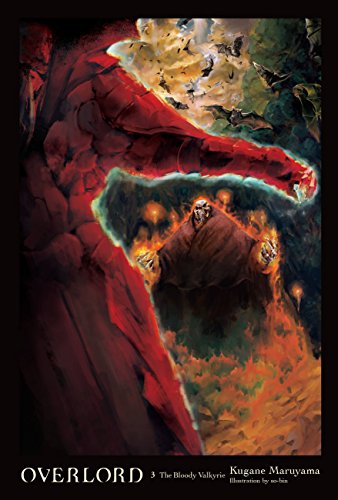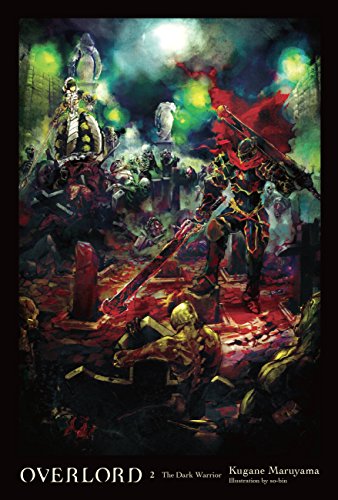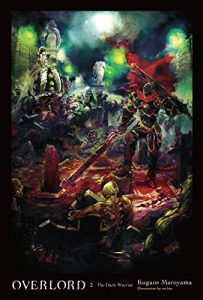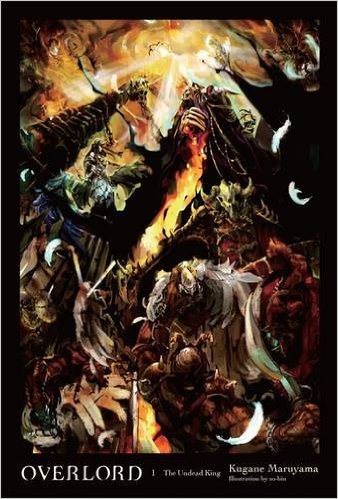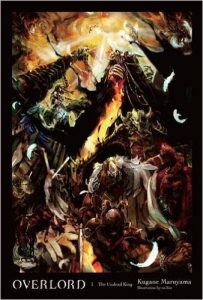By Kugane Maruyama and so-bin. Released in Japan by Enterbrain. Released in North America by Yen On. Translated by Emily Balistrieri.
There is a glut of light novels at the moment based on the game stats premise, be it “trapped in a game” or that the world simply works like a game. This includes Overlord, which manages to be a combination of both. At its best, Overlord shows us the cognitive dissonance between what Ainz is thinking in his head and what is actually happening, or what his minions are actually doing without his knowledge. At its worst, it gets bogged down in long grinding fights that are simply collections of spell moves. Overlord seems to be very much in the Dungeons and Dragons mode, which is fine for worldbuilding, but to keep the mechanics of it as well means that for non-gamers, the climactic fight can get amazingly tedious at times. Which is not what you want to hear about what you’ve spent the entire book building to.
This book also spends a large amount of time away from ainz – he doesn’t show up till a third of the way in – and thus also shows that the book is best when it focuses on him. I can see why we had the extended prologue – the plot is that his minion Shalltear has been mind-controlled, so we need to spend a fair amount of time with her at the start so that we actually get a sense about what the mind control really means and can try to care about her. Unfortunately, this is Overlord, a series made up of evil villains. And so Shalltear is a monster, who only seems sympathetic because the humans that she lays to waste here are a bunch of thugs who like to rape and rob young women. Her best moment was when she ran into one of the humans Ainz met in Book 2, who has one of his potions. This accidentally saves the girl’s life, as Shalltear has no idea why Ainz gave it to her, and so doesn’t dare kill her.
We are at the “this is successful, go ahead and expand your subplots” point in the series as well, so we get a few characters who show up and I suspect will be plot-relevant later on. This includes the somewhat ineffectual king, whose only ally seems to be his noble soldier (who we met in Vol. 1 thanking Ainz for defending the village). There’s also the king’s young daughter, who is gorgeous and beloved and I suspect has a lot more to her, and the daughter’s somewhat overly serious and twitchy bodyguard. And there is the unfortunately named Brain (it’s OK, the bodyguard’s name is Climb), who has spent much time training to be the strongest only to run into someone who completely breaks him to bits with no effort at all. The humans in this book tend to be cannon fodder, but he actually gets away, so we’ll see if he shows up again.
As I indicated, this is best when focused on Ainz and his inner monologues, meaning it’s the middle third that held my interest most. Overlord is still a series well worth reading. But it could stand a good editing, and eventually I will have to get used to the fact that it’s a bunch of bad guys power-tripping.
